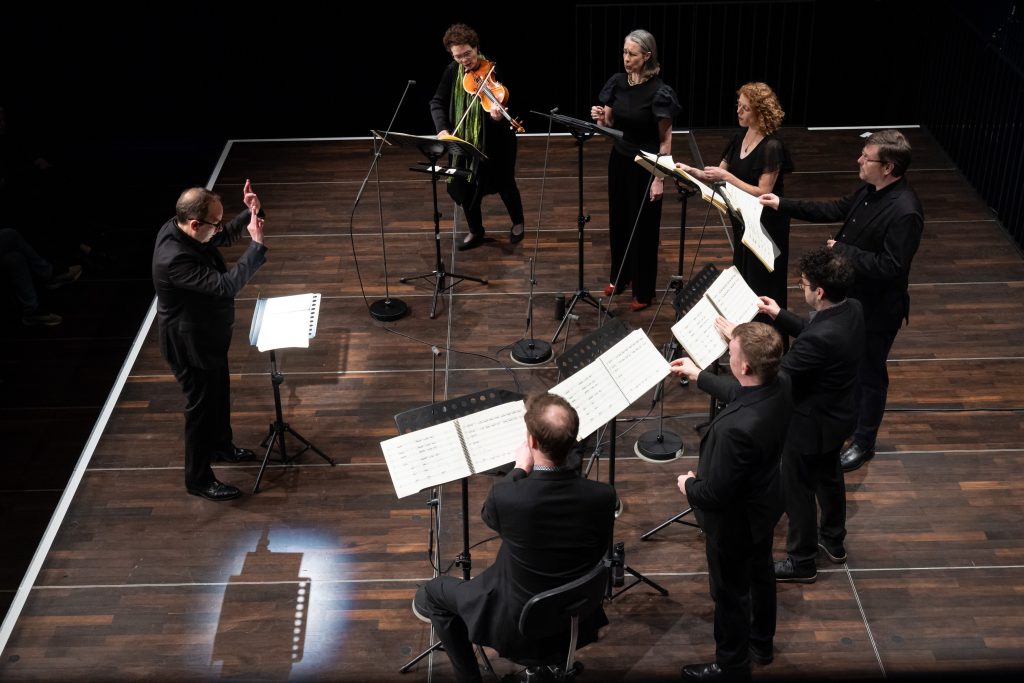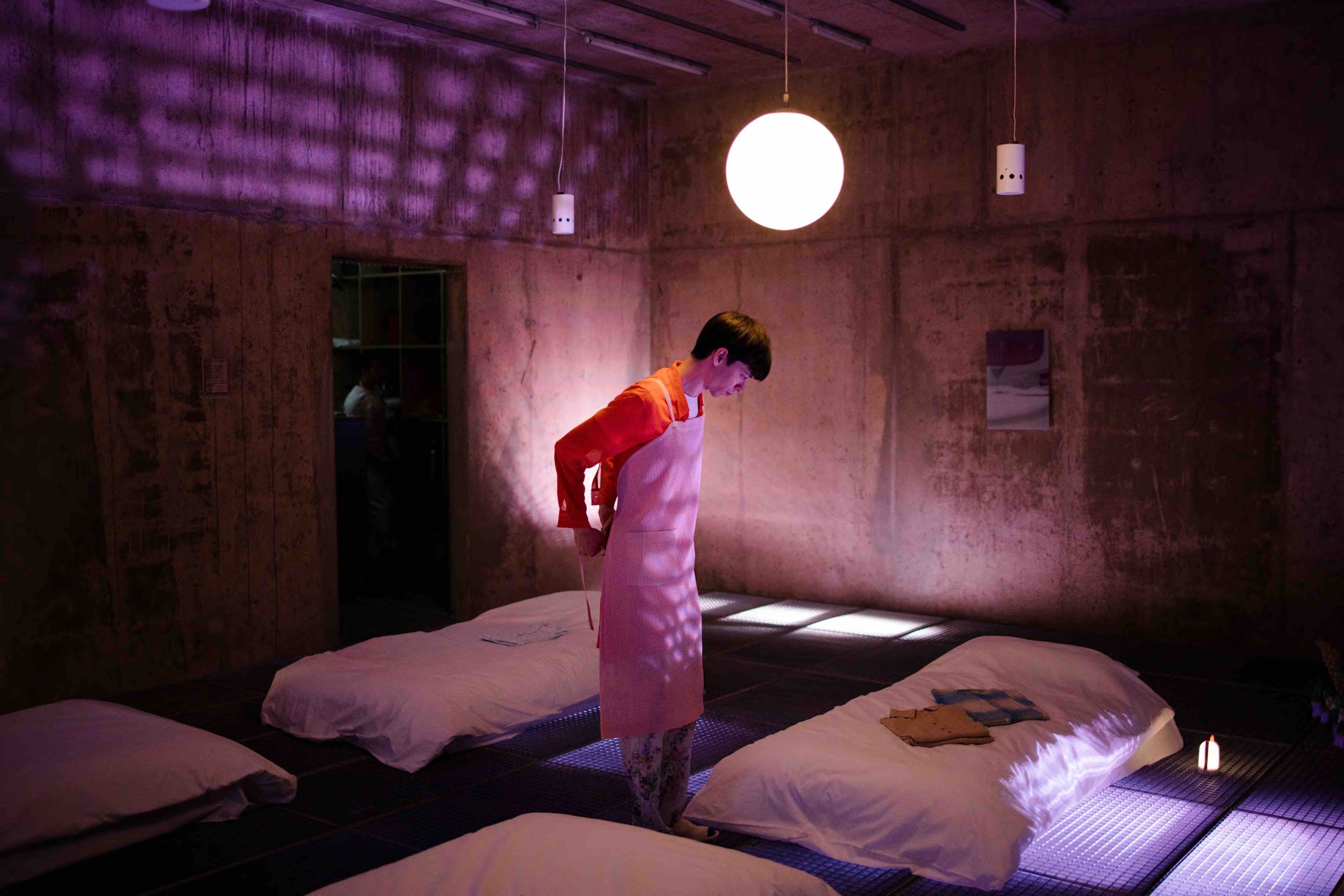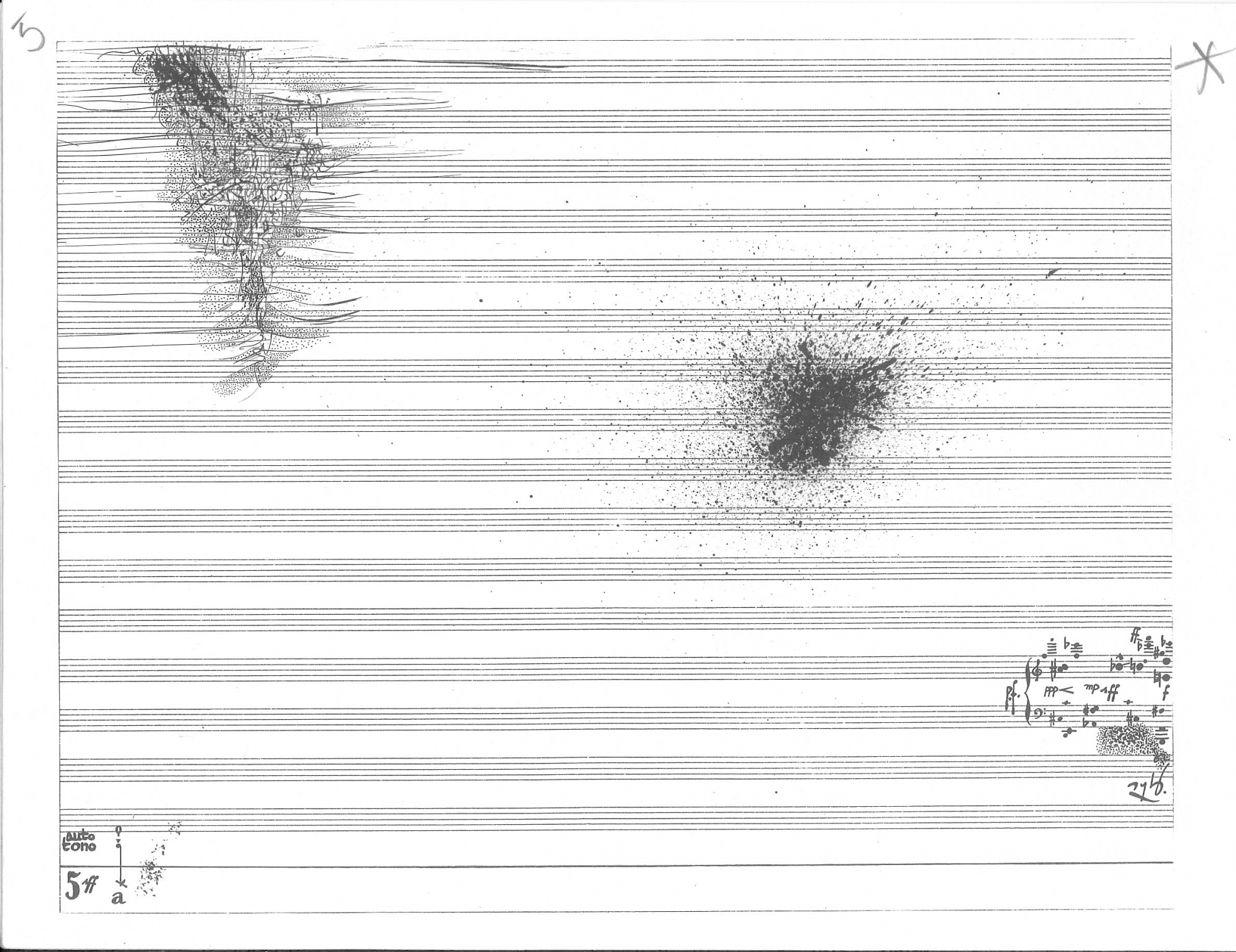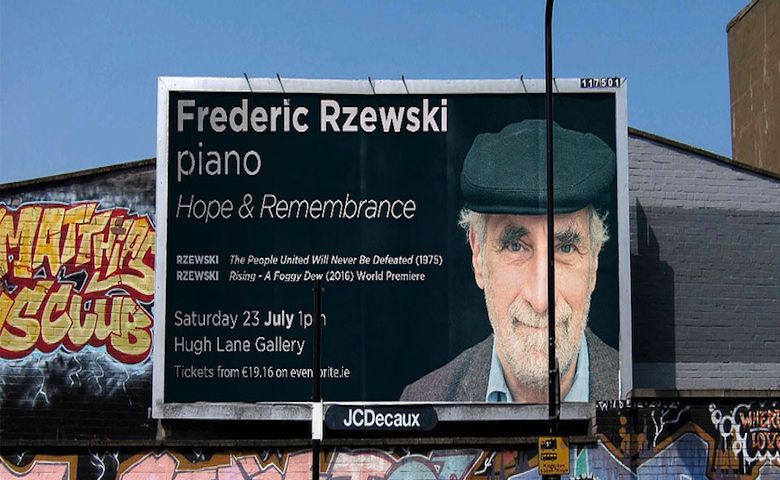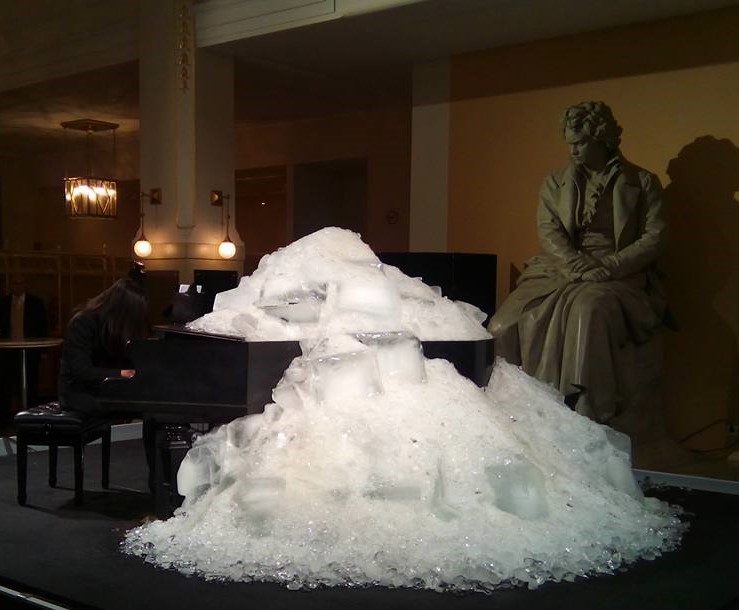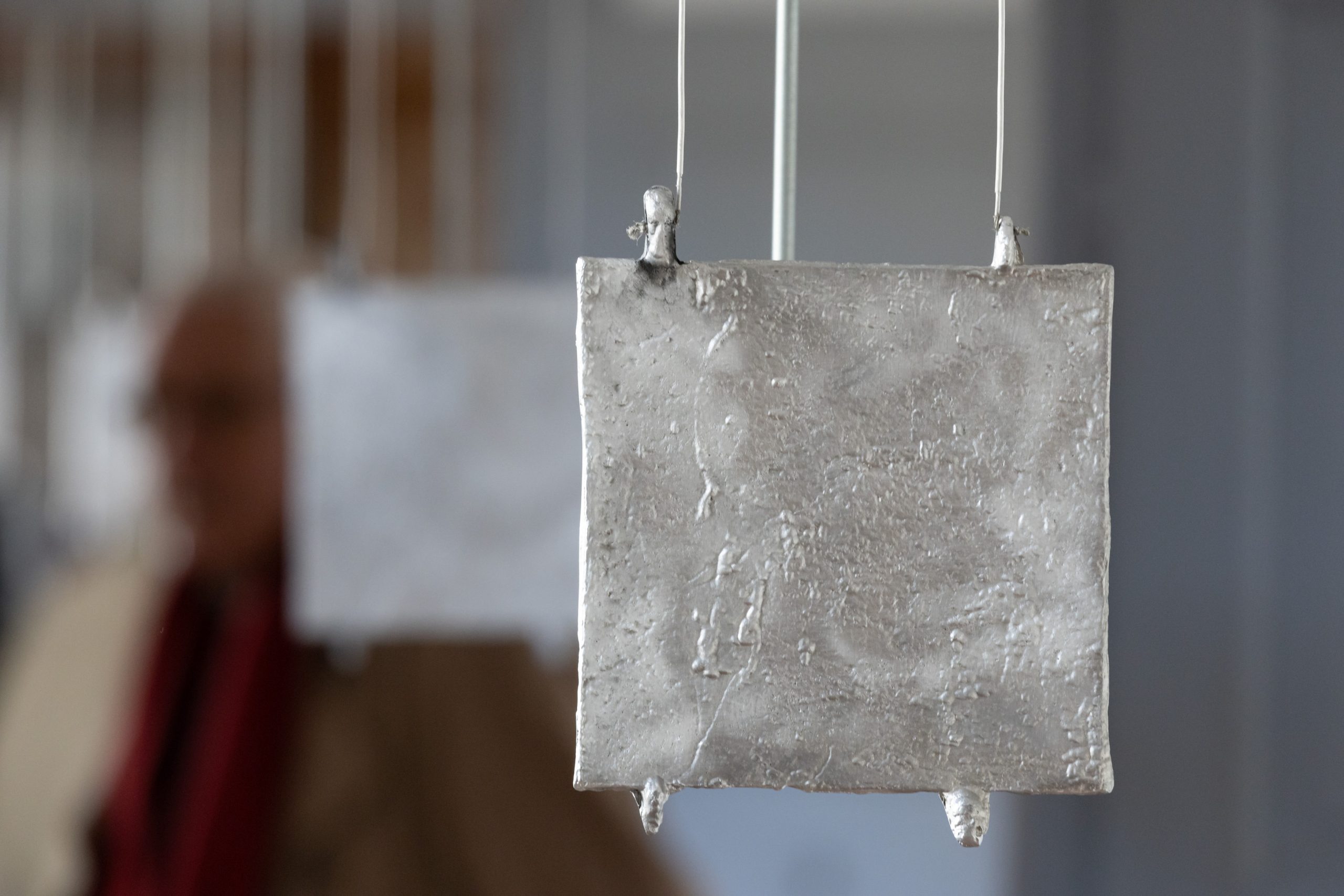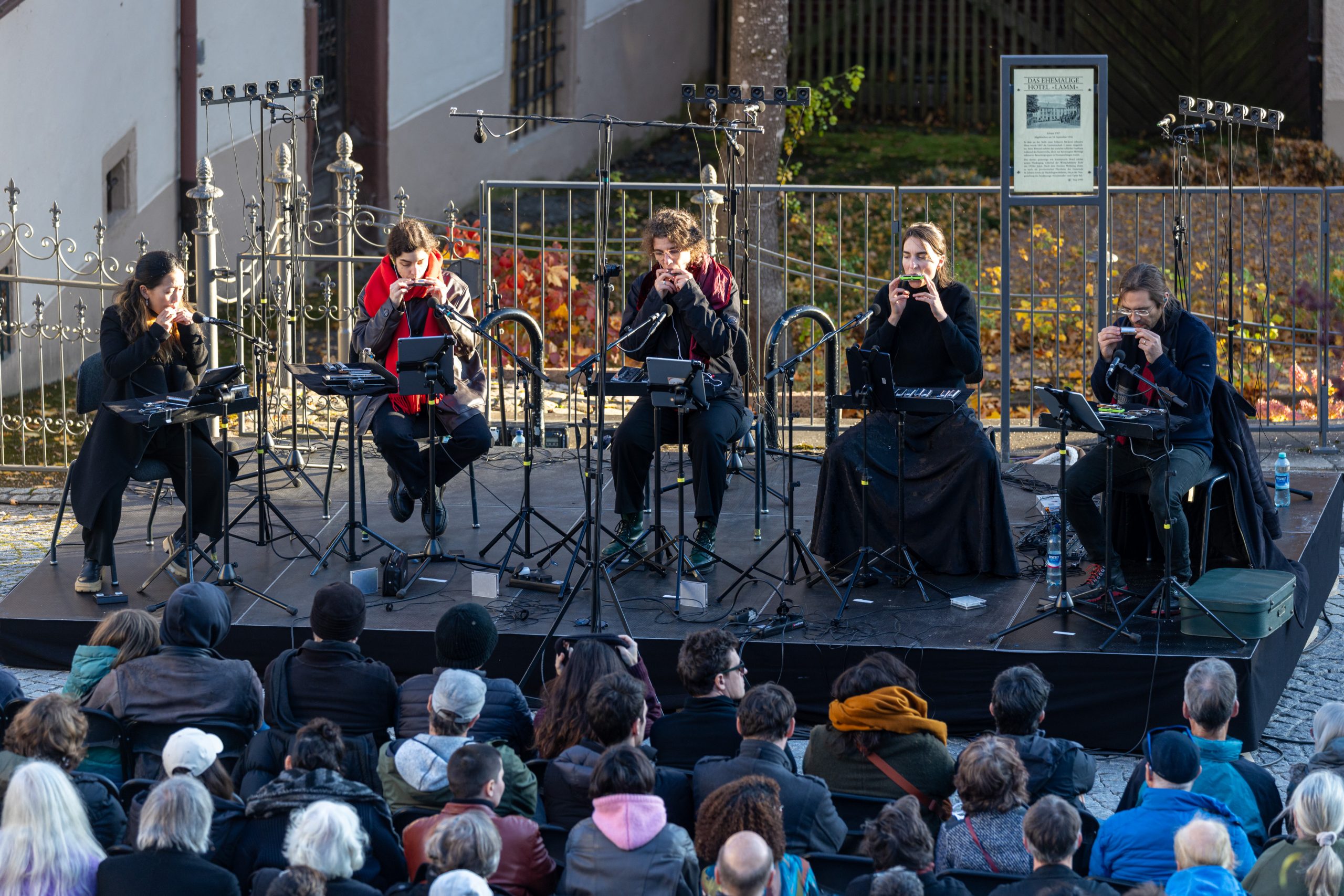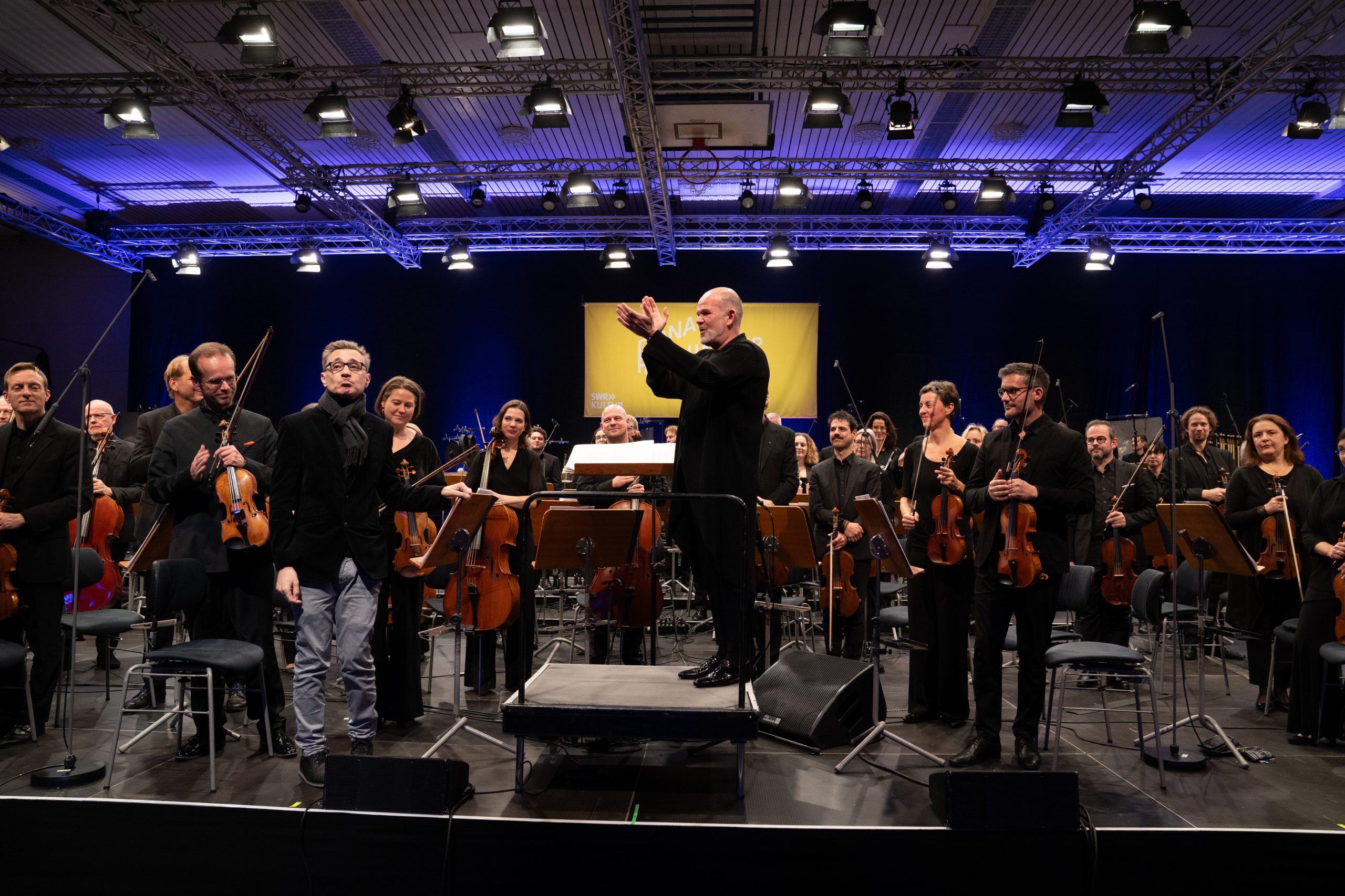Visite Critique Donaueschingen: Georges Aperghis
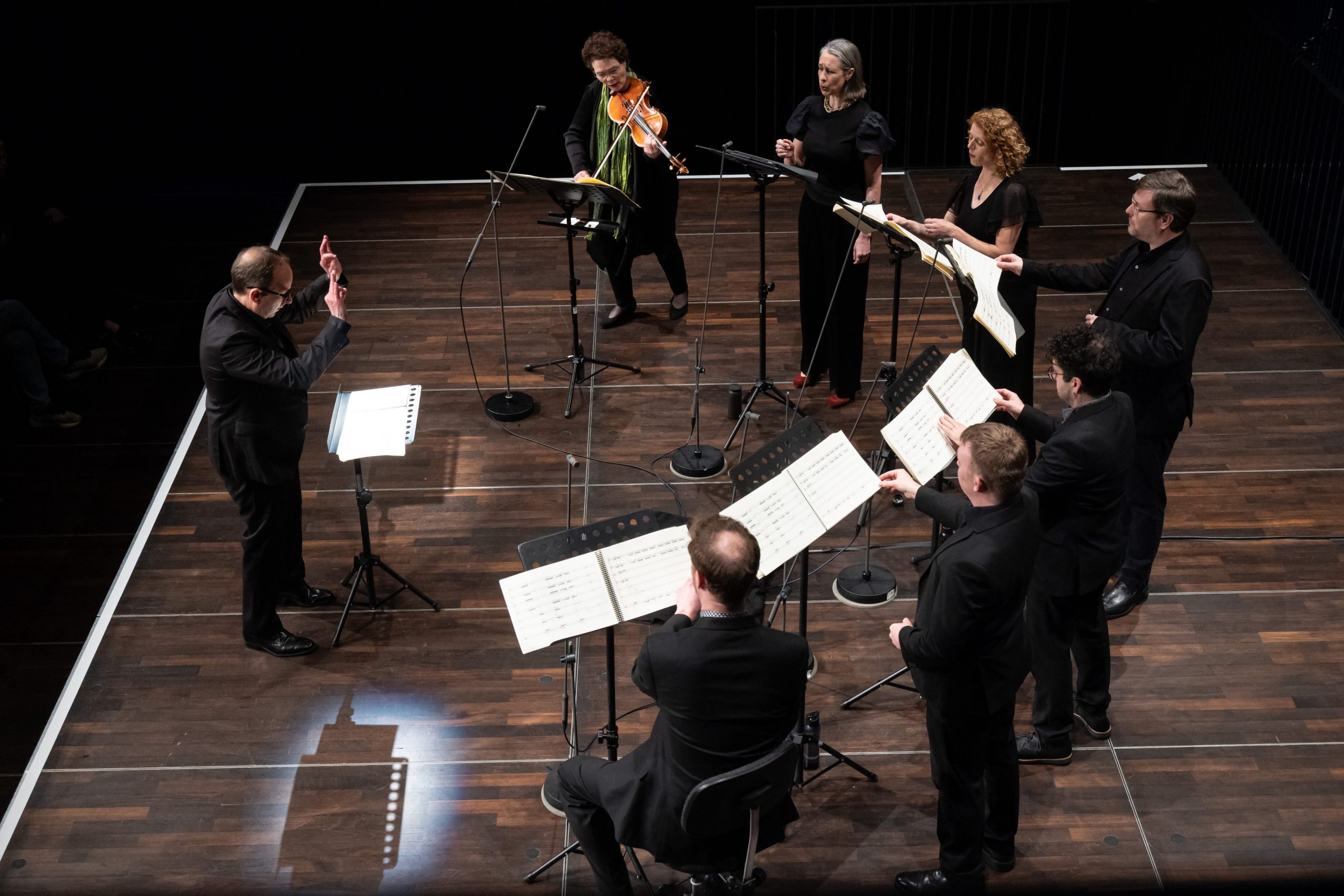
The following text was written in the context of the visite critique during the Next Generation workshop at the Donaueschinger Musiktage 2025.
On Tell Tales by Georges Aperghis
A text by Carmel Curiel
The title Tell Tales reads as an order, a request — to tell a story rather than to introduce one. It immediately raises the question: who is the storyteller, and what story is being told? The piece functions as a meta-work on storytelling itself, and on the failure of that attempt – at once autobiographical and reflective of Aperghis’ lifelong fascination with language, rhythm, and fragmented narration. Through its expansive proportions and the self-referential gesture of quoting his earlier work Passwords (2016) for six voices – both in the text and the musical material, and perhaps alluding to other compositions as well – Tell Tales can be understood as a self-reflecting piece. It gathers Aperghis’ previous explorations of narrative, language, and voice into a single reflection on his own compositional attempts.
Aperghis writes of “a polyphony of words, phonemes, situations and stories triggered by the viola, which at times provokes, at times comments or suggests other soundscapes.” In this sense, the storyteller of the piece is not the human voice, but rather the viola, which occasionally assumes a human-like expression – a fleeting bel canto phrase, a fragile melodic direction. Yet these moments never evolve into full narrative statements.
The tension of rhythmic unison is one of the most distinctive compositional signatures in Aperghis’ writing. In Tell Tales, it emerges both within the vocal ensemble and, at key structural moments, between the singers and the viola. This unison embodies a dual nature: on one side, mechanical precision and motion; on the other, words, meaning, and expression. The two forces feed one another – the mechanistic rhythm gains significance through the presence of language, while the human voice acquires an instrumental, almost machine-like quality. It is a double tension: between the pursuit of perfect virtuosic unity and the constant oscillation between mechanical sound and direct human expression.
Listening feels like being among a parliament of old friends — fragments of conversation, words half-heard, gestures half-understood. Each performer has their own brief intermezzo, a momentary emergence from the collective texture. In a distinctly Haydn-like democratic gesture, Aperghis allows every performer to manifest their own illocutionary act, each provoking a sense of urgency that remains forever unresolved.
Through extreme registers, microtonal inflections, dense canons, rhythmic unisons, and fragmented text, Aperghis masterfully shapes the listener’s perception, evoking that familiar sensation of trying – and failing – to grasp meaning within the classical framework of vocal expression. Perhaps the urgency of the piece lies not within the story itself, but in the listener’s continual attempt to comprehend the musical and textual meaning of Aperghis’ writing; a language that hovers perpetually between clarity and transparency, and the ungraspable magic it contains.
The performance by the EXAUDI ensemble and Tabea Zimmermann mirrored this inner struggle beautifully. Despite the extreme demands of the score, each performer’s individuality remained vivid. The work seems written for these performers – their distinct timbres and temperaments shaping the piece. Among them, Tabea Zimmermann stood out as the free voice, her playing half-danced, half-spoken — as though she were composing the piece anew in each gesture.
Formally, the piece unfolds as a continuous stream – a single gesture containing multiple inner narratives. Solos appear like brief illuminations within the flow, yet the work resists segmentation; it insists on being experienced as one extended act of storytelling. Aperghis’ characteristic pyramid repetition system, in which each repetition expands and reveals new details, propels the music forward in a one-dimensional yet ever-intensifying motion. “Listeners are free to create their own path through this labyrinth.” Yet the experience of listening feels more like complete immersion in a single, relentless forward movement — one that seems to begin already at the climax of the “story”.
This approach resonates with the concert format adopted in this edition of the festival, where certain events center on a single work, creating a unified and concentrated experience. In the case of Tell Tales, this format amplifies the work’s monumental presence — a vividly immersive and deeply significant experience.
